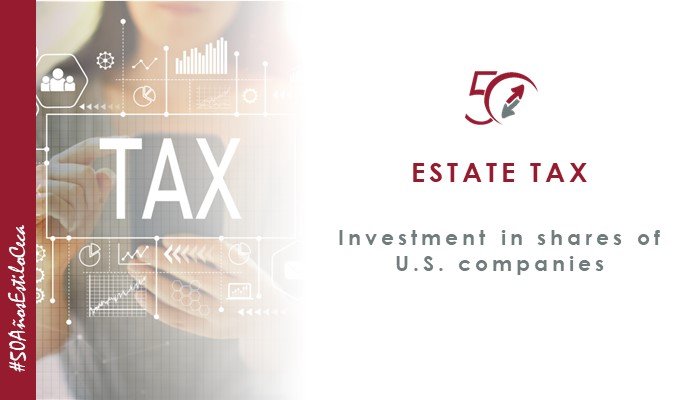
Table of contents
The culture of stock-based incentive plans ("stock options", RSUs, RSAs, etc.) is part of the DNA of American companies, generating, in recent years, an exponential growth in the number of Spanish workers with stock in U.S. companies. Large investors are also looking for diversification and higher returns in the American market than those offered in the European market.
Investment prospectuses and information on share delivery plans provided by employers often warn of the tax implications, but, as a rule, they limit such information to income taxes, without including references to something as relevant as the consequences of the transfer of the shares upon the death of the holder.
“Estate tax”: an unforeseen cost
The decease of the holder of stock in U.S. companies triggers U.S. federal tax liabilities, mainly, estate tax. Unlike the Spanish inheritance tax (“impuesto sobre sucesiones”), the estate tax is a tax on the estate itself, not on the heir.
In cases where the deceased is a Spanish tax resident, non-U.S. person, estate tax will only be levied on the assets that U.S. law considers located in the United States (U.S. situs). Stock in companies incorporated under U.S. law, even if the stock is deposited outside the United States and if they are registered in the name of a nominee is considered U.S. situs.
Tax calculations are based on fair market value of the assets located in the United States at the date of death, which, in the case of stock in listed U.S. companies, is equivalent to the quoted price of the stock on the date of death. A USD 60,000 exemption applies, with the excess net value being subject to estate tax at a progressive tax scale ranging from 18% to 40%. This means that, for stock in U.S. companies valued at around USD 200,000, federal estate tax would be around USD 38,000. For taxable estates in excess of USD 1,000,000, estate tax will be USD 345,800 plus 40% on the excess of USD 1,000,000, which is significant amount.
The deadline to file and pay the tax is 9 months from the date of death. An extension of the time to file and pay can be applied for, which will avoid penalties, but not the accrual of underpayment interest, which is currently at 8% per year, compounded daily.
In addition to the federal estate tax, twelve of States (including New York, Connecticut, Vermont, Hawaii, Oregon, and Washington) have enacted state estate taxes, and six others have state inheritance taxes (including Kentucky and New Jersey), which can further complicate the inheritance scenario and cost. Although, usually, state taxes are linked to the situs of the assets and the domicile of the deceased or the heir in the relevant State, it is advisable to review the applicability of these taxes in the case of non-residents, non-citizens of the United States, to rule them out, should it be the case, and avoid further undesirable surprises.
Changing stock ownership: a two-year obstacle course
The time difference and language are the least of the barriers when it comes to managing a change of ownership of stock deposited in the United States.
The first request of the American custodian will be proof that we are the "executor" of the estate, an institution similar to that of the Spanish “albacea”, who is entrusted to take any and all necessary steps for the correct distribution of the estate, including the filing and payment of any tax liabilities pertaining to the estate (i.e. "estate tax"). The executor must be appointed and endorsed by the court.
Since appointing an “albacea” is not mandatory in Spain, nor does it require judicial intervention in case of having been appointed by the deceased, the first obstacle will be convincing the custodian that the heir requesting the change of ownership of the stock according to the Spanish deed of acceptance of inheritance is entitled to manage such change.
Once this not insignificant step is overcome, the next request of the custodian, in addition to the obvious documents (will, death certificate, copy of identity documents... all sworn-translated and apostilled) will be a Transfer Certificate. This certificate is issued by the IRS and certifies that that the tax imposed upon the estate, if any, has been fully discharged or provided for, thus authorizing the transfer of ownership. This document is essential to avoid the custodian becoming jointly and severally liable for the payment of the estate tax. And this is the real stumbling block in the change of ownership course, not because of the difficulty of the process but because it is time-consuming: it takes, approximately, two years for the IRS to issue the certificate.
At CECA MAGÁN Abogados we have been helping many Spanish residents to successfully manage these situations. Our experience allows us to accelerate the implementation of the process as much as possible so that the two-year term starts to count as soon as possible. However, our recommendation to investors in stock in U.S. companies is to carry out some estate planning to avoid or minimize the impact of this tax on inheritances before the taxable event occurs. Anticipation is key. You can contact us here.
Partner in Tax and expert in American Taxation
Add new comment